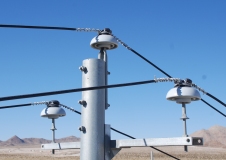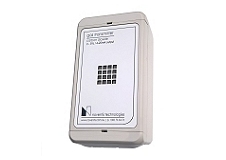Gas Detection High Voltage GIS Switchgear
Gas insulated high voltage switchgear (GIS) is a compact metal encapsulated switchgear consisting of high voltage components, which can be safely operated in confined spaces. Sulphur hexafluoride (SF6) has exceptional electrical insulation performances, ideal for high voltage applications such as switchgear. Sulphur hexafluoride is colourless, odourless and heavier than the air and is not considered as toxic. However it is suffocating at high concentration (it replaces the oxygen). SF6 gas has virtually replaced oil and air as the dielectric insulator in medium (MV) and high (HV) circuit breakers, switchgear, gas-insulated substations and electrical equipment.
Despite SF6 being an inert gas during normal use, when electrical discharges occur by operation of high voltage equipment insulated with SF6, highly toxic fluoride by-products are produced that pose a serious health threat to workers. The most dangerous of these fluoride by-products is disulfer decafluoride (S2F10), a colorless gas or liquid that is highly toxic, but produces few immediate physical side effects, making it difficult to detect exposure. The Permissible Exposure Limit – TWA is only 0.025 ppm and 1 ppm is considered Immediately Dangerous to Life or Health (IDLH). Therefore, always treat a space that could have SF6 in it as a legitimate atmospheric hazard and monitor for fluorides.
Effects and Precautions
SF6 gas has been identified as the most potent and persistent greenhouse gas in existence with a global warming potential, its Global Warming Potential (GWP), 22,200 times higher than CO2. Leakage control and regular checks on fluorinated greenhouse gases such as SF6 are mandated. Hence monitoring and detection is essential. In addition, it provides an early warning that the gas is leaking and thus maintains system efficiency and reduces potentially huge gas replacement costs.
Sulphur hexafluoride has no lower and upper explosive limits. This means that it is non-flammable and non-explosive. It can yet violently react with disilane which can produce an explosive mixture. It hydrolyses easily in water into fluoride compounds (thionyl fluoride and hydrogen fluoride) which are extremely toxic and corrosive substances. Confined spaces, generally the Cable Basement with a potential exposure to SF6 should be monitored for their O2 content as well.
Although SF6 is not generally considered toxic, it has an short term exposure limit of 1000ppm. As the gas is so heavy in comparison to air, it is also considered by some to present a substantial suffocation risk, because once inhaled, it is hard to expel from the lungs. Some other application of SF6 are within medical industry or as tracer compound for various application.
Since SF6 is over 5 times heavier than air, most effective way of detection would be close to floor level. Especially for this application, Bionics instrument designed a gas detector which comes with internal sampling pump. This allows monitoring close to floor level whilst the detector and display is fitted at reading level.
SF6 Specification
- SF6 Density (compared to air): 5.04
- TWA level: 1,000 ppm
- Global Warming Potential 22,200 times higher than CO2
Documents and References
- AS 2067-2016: Substations and high voltage installations exceeding kV a.c.
- AS/NZS IEC 62271: High-voltage switchgear and control gear



